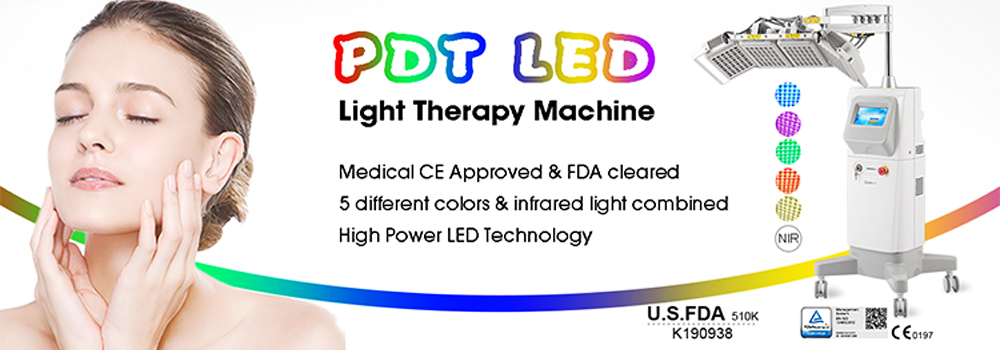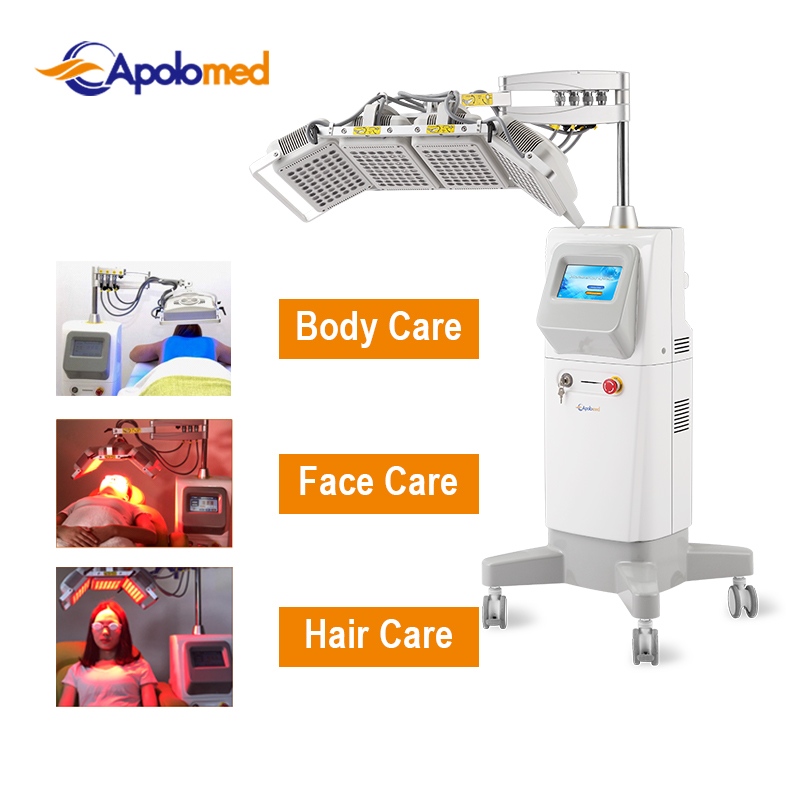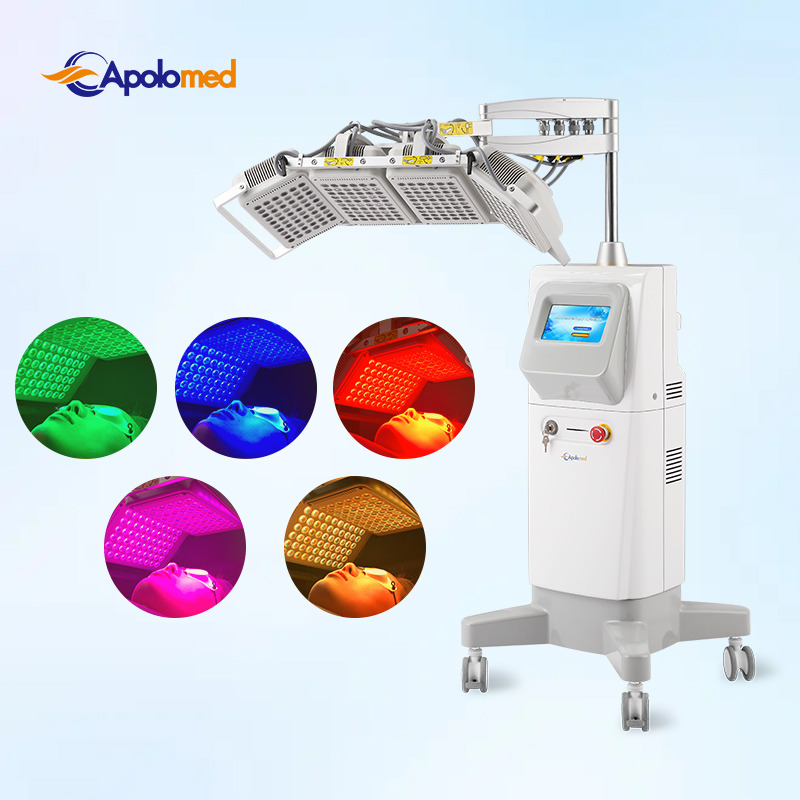
In the ever-evolving theater of aesthetic science, few modalities have captured the imagination and delivered consistent, non-invasive results quite like LED light therapy. This is not the stuff of fleeting trends; it is a discipline grounded in the fundamental principles of photobiology—the interaction of light with living tissue. The ethereal glow that promises rejuvenated skin is, in fact, the product of highly sophisticated, meticulously engineered equipment. But what exactly constitutes this arsenal of light? What are the instruments that empower practitioners to orchestrate cellular regeneration with such precision?
This exploration will take us beyond the surface-level allure of LED treatments. Furthermore, we will illuminate a critical and often misunderstood distinction: the difference between LED light therapy and Photodynamic Therapy (PDT).Journey with us as we unpack the technology that is quite literally shaping the future of skincare.
The Vanguard of Professional Systems: Power, Precision, and Performance
At the apex of phototherapy lies professional-grade equipment, the kind of robust, versatile systems that form the backbone of a modern aesthetic practice. These are not mere lamps; they are advanced instruments designed for optimal therapeutic dosimetry—delivering precise wavelengths at a sufficient energy output (irradiance) to effect tangible, biological change within the cellular milieu.
A quintessential example of this technological echelon is the . This system is a masterclass in engineering, embodying the core attributes that define professional superiority:
Exceptional Power and Irradiance: A critical differentiator between professional and consumer-grade devices is the energy output. The HS-770 boasts an exceptional 12W per LED, a formidable power level that ensures photons penetrate the skin to the required depth to stimulate target chromophores (molecules that absorb light). This high irradiance is crucial for triggering the desired physiological responses, whether it be collagen synthesis in fibroblasts or the calming of inflammatory mediators.
Multi-Wavelength Capability: Skincare is not a monolithic challenge. Different conditions require different solutions, and in LED therapy, the solution is wavelength-dependent. Professional systems like the HS-770 are polychromatic, offering a spectrum of therapeutic light. This includes Red light (630nm) for profound anti-aging and regenerative effects, Blue light (415nm) for its potent antimicrobial action against acne-causing bacteria, Green light (520nm) to address pigmentation irregularities, Yellow light (590nm) to improve lymphatic function, and even Infrared (IR) light (830nm), which is invisible to the naked eye but penetrates deepest to mitigate inflammation and accelerate healing.
Ergonomic and Treatment Versatility: A clinical setting demands flexibility. The HS-770 features a fully articulated arm and large, adjustable treatment panels. This design is not merely for convenience; it is about clinical efficacy. It allows the practitioner to precisely contour the light source to any part of the body—from the face and décolleté to the back and limbs—ensuring uniform light delivery across the entire treatment area.
These professional systems represent the gold standard, providing the power and control necessary for predictable, clinically significant outcomes in a safe, controlled environment.
The Contrast: At-Home Devices
The consumer market has seen an explosion of portable, handheld LED devices, primarily in the form of masks and wands. While these gadgets offer the allure of convenience, it is imperative to understand their technological limitations when compared to their professional counterparts.
At-home devices operate at a substantially lower irradiance. This is a necessary safety precaution for unsupervised, direct-to-consumer use, but it fundamentally impacts their therapeutic potential. While consistent, long-term use can yield subtle improvements in skin tone and texture, the results are rarely comparable to the transformative changes achievable with a course of professional treatments. They are best viewed as a complementary component of a comprehensive skincare regimen, a way to maintain and enhance the results achieved in a clinical setting, rather than a replacement for professional-grade phototherapy.
PDT vs. LED Light Therapy
Within the lexicon of light-based treatments, considerable confusion exists between Photodynamic Therapy (PDT) and conventional LED Light Therapy. While both may utilize an LED light source, they are fundamentally different treatments with distinct mechanisms and clinical applications.
LED Light Therapy (or Photobiomodulation) is a non-invasive treatment that uses light energy alone to stimulate cellular activity. The photons are absorbed by mitochondria and other chromophores within cells, triggering a cascade of beneficial biological processes. This can include increased ATP (cellular energy) production, enhanced collagen and elastin synthesis, reduced inflammation, and improved circulation. There is no damage to tissue and, consequentially, no downtime. It is a purely stimulatory and regenerative process.
Photodynamic Therapy (PDT), conversely, is a two-stage medical treatment. It combines a light source with a photosensitizing agent.
Application of a Photosensitizer: A topical medication (such as Aminolevulinic Acid, or ALA) is applied to the skin. This agent is preferentially absorbed by abnormal or hyperactive cells, such as actinic keratosis (precancerous lesions), sebaceous glands in severe acne, or certain types of skin cancer cells.
Activation with Light: After an incubation period, the treatment area is exposed to a specific wavelength of light (often blue or red). This light activates the photosensitizer, causing a chemical reaction that produces a form of oxygen that selectively destroys the target cells that absorbed it.
Because PDT is an inherently destructive process (albeit highly targeted), it is associated with a recovery period. Patients can expect redness, peeling, and sun sensitivity for several days to a week following treatment. It is a powerful, effective procedure for specific, often serious, dermatological conditions, but it is far more intensive than regenerative LED therapy. Advanced systems like the Apolomed HS-770 are designated as "PDT LED" platforms, signifying their robust capability to serve as the activating light source in these complex medical procedures, underscoring their clinical-grade power and precision.
The equipment used for LED light therapy is as varied as the skin concerns it aims to treat. From the convenient at-home mask to the formidable, multi-functional clinical platform, each device has its place. However, for practitioners dedicated to delivering profound and lasting results, the choice is clear.
Professional-grade systems, exemplified by the technological prowess of the Apolomed PDT LED HS-770, represent the pinnacle of phototherapy. They offer the non-negotiable trinity of power, precision, and versatility required to harness the full regenerative potential of light. Understanding the mechanics of this equipment, and the crucial distinctions between different light-based modalities, is what elevates a practice from offering a simple service to providing a truly transformative therapeutic experience. It is this commitment to technological excellence that illuminates the path to the future of aesthetic medicine.


Post time: Jun-09-2025




